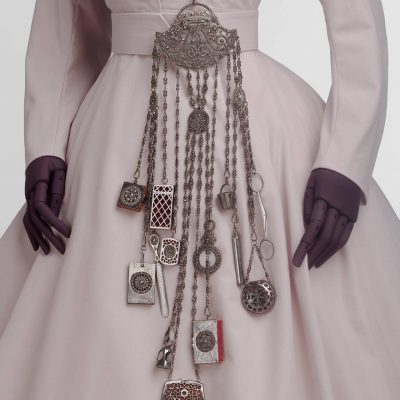
Exhibitions 25.01.2021
26.09.2019
accessoriesfashion history
What came before IT Bags?
Bags – as we intend them today – are quite a recent invention. What today is deemed as a fundamental ‘accessory’ absolving the necessity of carrying around personal items came out quite literally from ‘under the skirts’.
The first bags were called reticules. With the term ‘reticule’ we refer to a small drawstring bag, probably the first ‘bag’ in the modern sense of the word. It then went on to become a synonym for any kind of purse or handbag carried by a woman. The name comes the French réticule, and originally from the latin reticulum, meaning a net or mesh. Many of the first reticules were in fact made using netting techniques.
Reticules replaced the knotting bag, a sort of portable pocket in use in the eighteenth century, so called because it usually carried the tools and materials for knotting. Reticules started being used in eighteenth and nineteenth centuries. They came in fashion mostly because the style in dress changed from voluminous and heavy gowns to more lightweight muslin dresses; therefore, underskirt pockets did not go well with the new silhouettes, and required to find a solution to replace them.
At the beginning, the use of reticules caused quite a fuss amongst women of different generations most of all because reticules were shaped as pockets – recognized as undergarments, not to be seen – but they were ‘worn’ on the outside, to complement the look. Reticules were ‘shocking’ also because to carry items and money in bags and outside pockets was considered a masculine habit. However, reticules later became known as ‘indispensables’, given the importance they gained in the feminine attire.
Soon reticules started being diversified through forms and materials: they were made of lace or velvet, heavily embroidered, beaded, even hand-painted with different designs. Early in the nineteenth century, the reticule was sometimes called the ‘ridicule’, but the reason is not clear: was it because they were too small to be really seen as indispensable, or because they were small but overstuffed, causing their design to change and adapt to the new needs of mid-nineteenth century women.